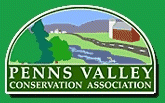Busy Bees
Standards: 4.2 Renewable and Nonrenewable Resources, 4.4 Agriculture and Society, 4.6 Ecosystems and Their Interactions, 4.7 Threatened, Endangered, and Extinct Species, 4.8 Humans and the Environment
Duration: 30 to 40 minutes
Setting: Inside, Outdoor – General, Farm
Vocabulary: pollination, queen bee, worker bee
Summary: Students take turns being bees and trees, and see how many different trees they can pollinate in a certain amount of time.
Objectives: Students will learn how plants are pollinated by bees (in this case specifically flowers on trees in an orchard) and why it is important. They will also learn the different factors that influence the ability of bees to do work.
Materials: brown paper bags labeled “tree”, strips of construction paper (30 for each student acting as a tree), optional: pipe cleaner antennae or other fun way to distinguish bees from trees
Background:
Almost every time we eat a piece of fruit or a vegetable, we are eating the product of a process called pollination! Today we are going to use the example of apple trees in an orchard, but this same information could apply to most of the fruit-bearing plants we eat.
Before a fruit can grow, the tree puts out a flower. This flower has many different parts, one of which is called a stamen. On the stamen, is pollen! Pollen is usually yellow, and each pollen grain is very small. In order for a plant to reproduce and produce a fruit, the pollen from one flower has to get onto a different flower. Once this happens, a fruit will grow that can then be eaten by animals, which will help the seed containing the new baby plant be dispersed.
The pollen cannot just get up and walk to a new flower, so it has to use another method to get around. Some pollen is dispersed by the wind, but in the case of the apple orchard and most fruit bearing plants, bees disperse the pollen! Bees fly around to different flowers drinking the nectar that they hold inside. The flowers have this nectar specifically to attract the bees. The bees also collect some pollen to eat as food, but in this process a lot of extra pollen gets stuck to their bodies. When the bees fly to a different flower in order to collect more nectar, the pollen from the first flower falls off into the second one. This means the second flower is not pollinated, and can start growing a fruit!
One of the reasons why farmers grow fruit in orchards are so that all of the trees are close together and therefore the bees can get around easily. Some farmers keep their own bees, but other times they hire someone to bring a beehive to their orchard and let the bees out for a certain amount of time.
Procedure:
Warm Up: Ask students how many of them ate fruit today, or are planning to. Tell them they are eating a product of pollination! Show students pictures of bees pollinating plants, in general and in an orchard (see Handouts).
Activity:
For this activity, about ¾ of a class will be trees, and ¼ will be bees. Each student who is a tree will receive a paper bag labeled “tree” with 30 strips of construction paper. These strips of paper represent pollen. These students will be “planted” as the educator sees fit. They should be far enough apart that students don’t run into each other, but far enough apart that they are easy to get to. Once a tree is ‘planted’ they can’t move! These students will hold half of their construction paper strips in each hand, with the “tree” bag placed at their feet.
Explain to the students acting as bees that they are a certain type of bee called “worker bees.” The worker bees are sent out to collect pollen by the queen bee. In this case the teacher will be the queen bee, telling them what to do. The students acting as bees will go to a tree, remove a single piece of paper from the student’s hand, and then run to another tree. At the second tree, the student will place the construction paper into the bag labeled “tree,” and then take a new piece of construction paper from their hand. The bee student will go to a third tree, put the piece of construction paper in the bag, and take a new one, etc. etc. It is important the students do not put pieces of paper into the bag of the tree that was holding it! We are tracking the way the pieces of construction paper move around.
Have bees run around pollinating (moving construction paper around) for a timed minute. Then have students stop, and count the pieces of construction paper in the paper bags (NOT in the hands!!). Explain to the students that each piece of paper in the bags represents one flower pollinated, which will give them one fruit. Tell them how many apples they will have in the end.
Rotate groups so everyone gets a turn and repeat different scenarios.
Try having the students who are trees move farther apart. Time them for a minute again and see if it makes a difference to have trees spread out. Next, explain to students that when it is cold outside bees move more slowly. Have them be slow-motion bees for a minute and see if it makes a difference.
Assessment:
Have students explain where an apple comes from. Ask students why bees and pollination are important.
Enrichment:
Explain that bees are currently in danger. Brainstorm some things we could all do to help bees survive.
Bring in fruit or honey for students to taste.


Leave a comment